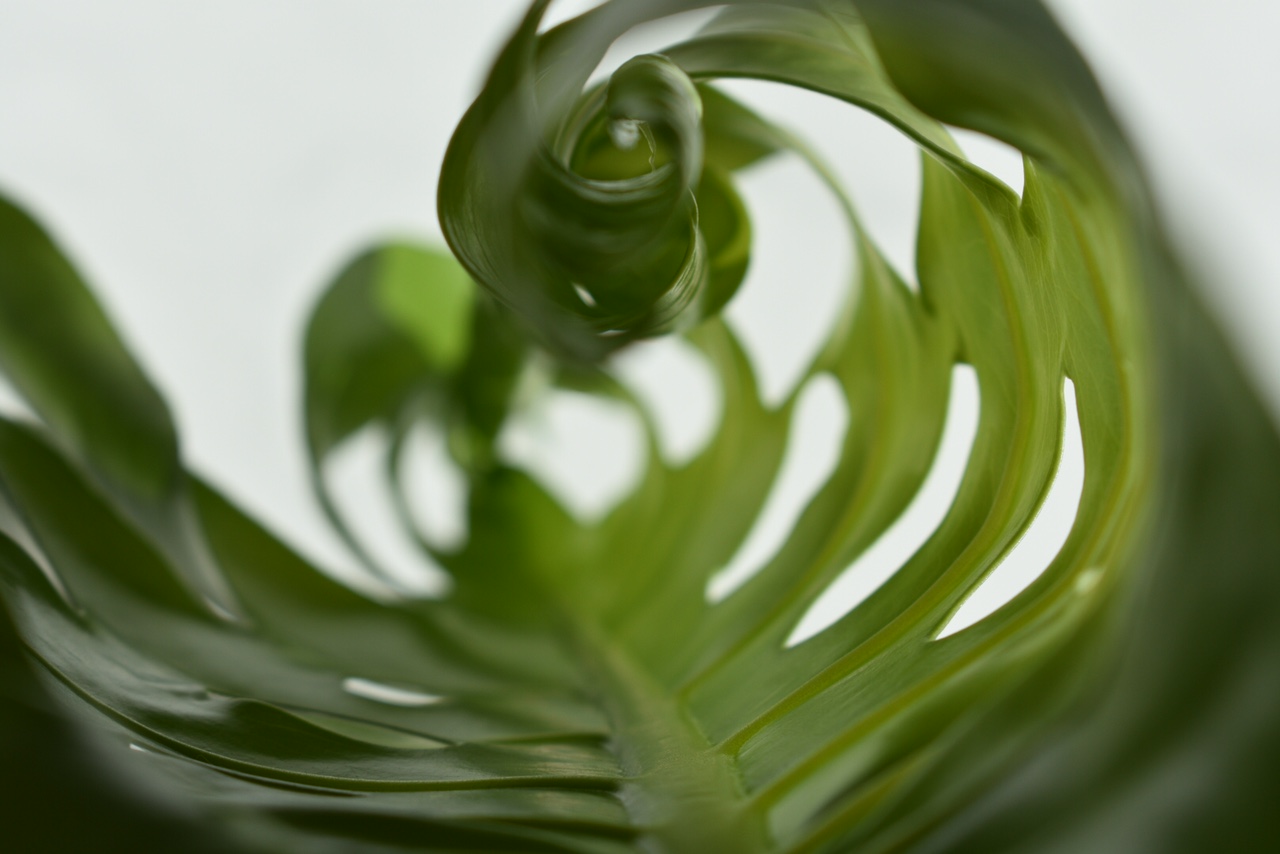I’ve always loved houseplants and yoga because they both help me to connect with nature. Houseplants bring life and energy into my home, and yoga helps me to connect with my breath and my body. When I adopted two cats, I was worried that they would destroy my plants. But luckily, I learned how to save houseplants from cats. I found a few solutions that worked for me, and I wanted to share them with you below.
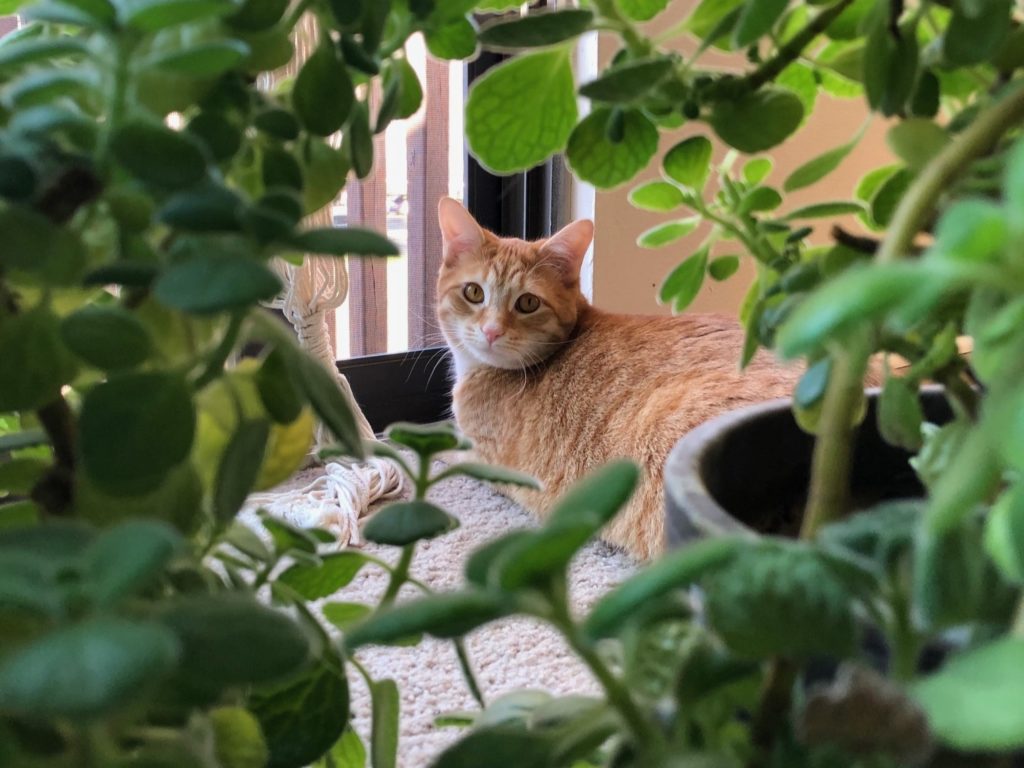
MY STORY
I was living gloriously solo in a new city, and caring for plants helped make my apartment feel more like home. Some plants were given to me by friends and family while others entered my space in more synchronistic ways, but each one had a story. I loved these plants, and there was space for more love in my home (and my heart) for the new kitties I was soon to adopt.
That sweet moment of gratitude was tempered with the knowledge that it could be one of the last times they were thriving and healthy. It was a maybe goodbye.
Fortunately, I picked up a few tricks to help us all happily coexist in a shared space — the plants, the cats, and me. I’m sharing them with you here so that you too can have as much love as possible in your home and your world. These solutions were very cost-effective, kept my space visually beautiful, and are safe for all the creatures in my household.
I did some research, and I found a few solutions that worked for me. Below are five ways to save your houseplants from your cats.
Five Ways To Save Your Houseplants From Your Cats:
1. Choose the right houseplants.
Some plants are toxic to cats, so it’s important to do your research before you bring any new plants into your home. The ASPCA has a list of plants that are poisonous to cats.
2. Protect your houseplants from digging.
It’s natural, after all! Cats love it. It’s their instinct to dig in sand, dirt, and kitty litter, so you’ll need to find a way to protect your plants from their claws. You can try using aluminum foil, bamboo skewers, or rocks to create a barrier between the dirt and your cat’s toe beans.
- Tin foil. This worked for a while at first. Aluminum foil was the quickest solution I could find for the “oh snap, I need something that works right now or this plant is gone.” Tin foil, and a cut-out tray that was duct taped to the top of the plant. It created a barrier between kitty paws and that sweet, sweet dirt that they love.
- Bamboo skewers. Place a bunch of these a few inches apart, sticking up out of the soil so that the kitty cats can’t dig.
- Rocks. Line the entire surface of the soil with rocks and stones. You’ll need to still have a way to check the soil occasionally since you won’t see the top layer. As long as the rocks can be moved easily by you, but not your cat, then it should work as a nice barrier between kitty paws and soil.
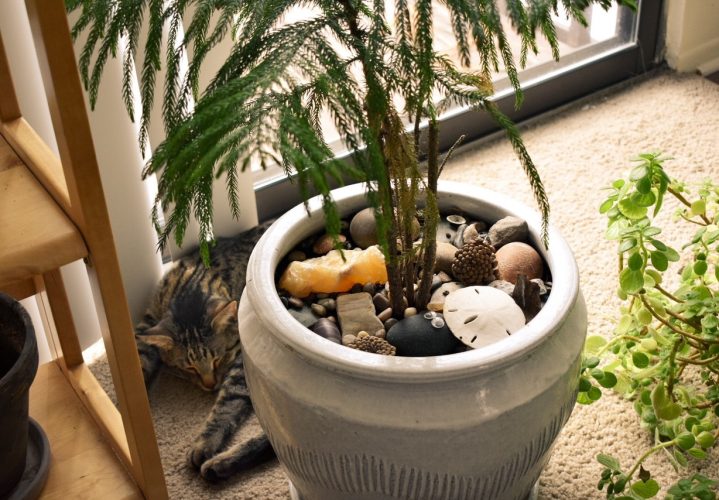
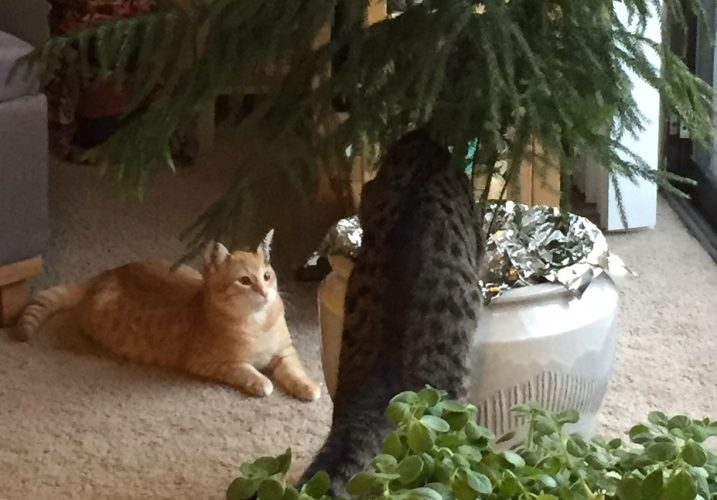
3. Make your houseplants taste bad.
Cats don’t like the taste of soap, citrus oils, or spicy herbs. You can try spraying your plants with a diluted solution of dish soap or lemon juice. Just be sure to test the solution on a small area of the plant first to make sure it doesn’t damage the leaves.
- Diluted dish soap in a spray bottle. Use a ratio of 1 tablespoon dish soap per gallon of water. Like, not much at all. A dab’ll do ya. Use the mixture to spray the whole surface area of the plant. This seems to keep fungus gnats and pests away, plus cats don’t like the taste of it. Mild dish soap (I used Dawn) didn’t hurt anything but the soapy taste was enough to make the cats lose interest. Be careful spraying herbs or other plants you plan to consume since they’ll need to be washed really well before cooking with them. Most people don’t like the taste of soap either!
- Citrus oils and herbs. *Blech!* Diluted lemon juice in a spray bottle might do the trick. Try it on a small part of the plant or a single leaf and leave it for a few days to make sure it reacts in a healthy way. Pay attention to the sunlight your plant gets after taking a lemon shower too since citric acid sometimes amplifies the UV rays.
- Spicy herbs like chili powder or pepper. Moderation is key. In high amounts, these can have caustic effects on a cat’s system, so use sparingly.
4. Place your houseplants out of your cat's reach.
4. Place your houseplants out of your cat’s reach. If you have cats who are determined to get to your plants, you may need to place them out of reach. This could mean putting them on high shelves or in rooms that your cats don’t have access to.
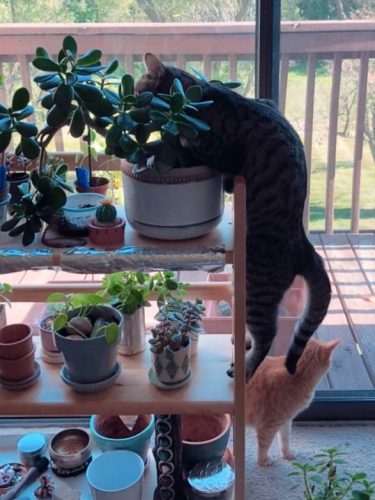
5. Be patient and persistent.
It may take some time and trial and error to find the solution that works for you and your cats. But with a little patience and persistence, you can find a way to have both houseplants and cats in your home.
Additional Tips
- Pay attention to your cat’s behavior. If your cat seems to be particularly interested in a certain plant, you may need to take extra precautions to protect it.
- Be consistent with your methods. If you only use a deterrent once or twice, your cat may not learn to avoid the plant.
- Be patient. It may take some time for your cat to lose interest in your plants.
I hope these tips help you to save your houseplants from your cats. With a little effort, you can have both a happy home and a thriving plant collection.
Closing Thoughts
So there you have it. Five ways to save your houseplants from your cats. There are so many other options that aren’t on this list, but these are the ones that worked for me. I hope that you find the perfect way to have a happy home filled with love and vitality. <3
If you have any other tips for keeping cats away from plants, let me know!
Subscribe to my newsletter for more tips on how to live a healthy and balanced life through yoga.
Thank you for reading!
